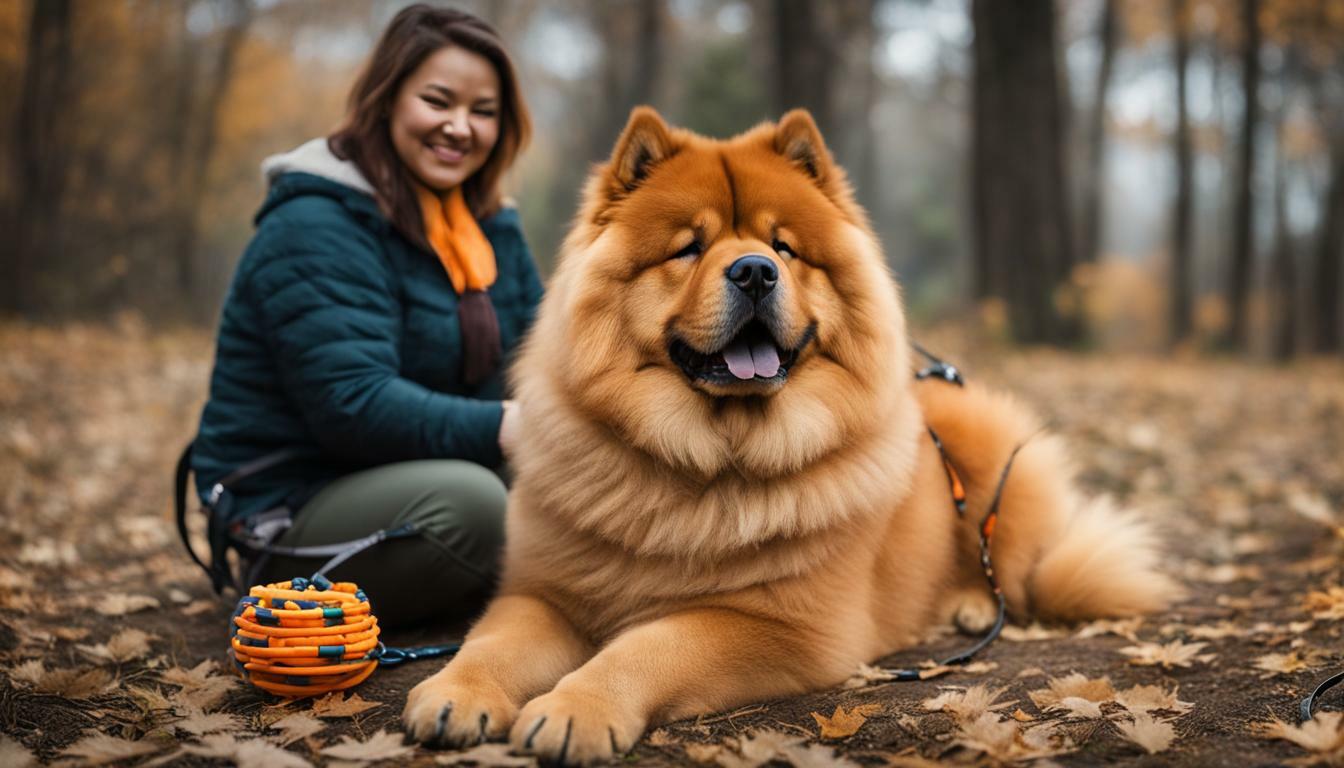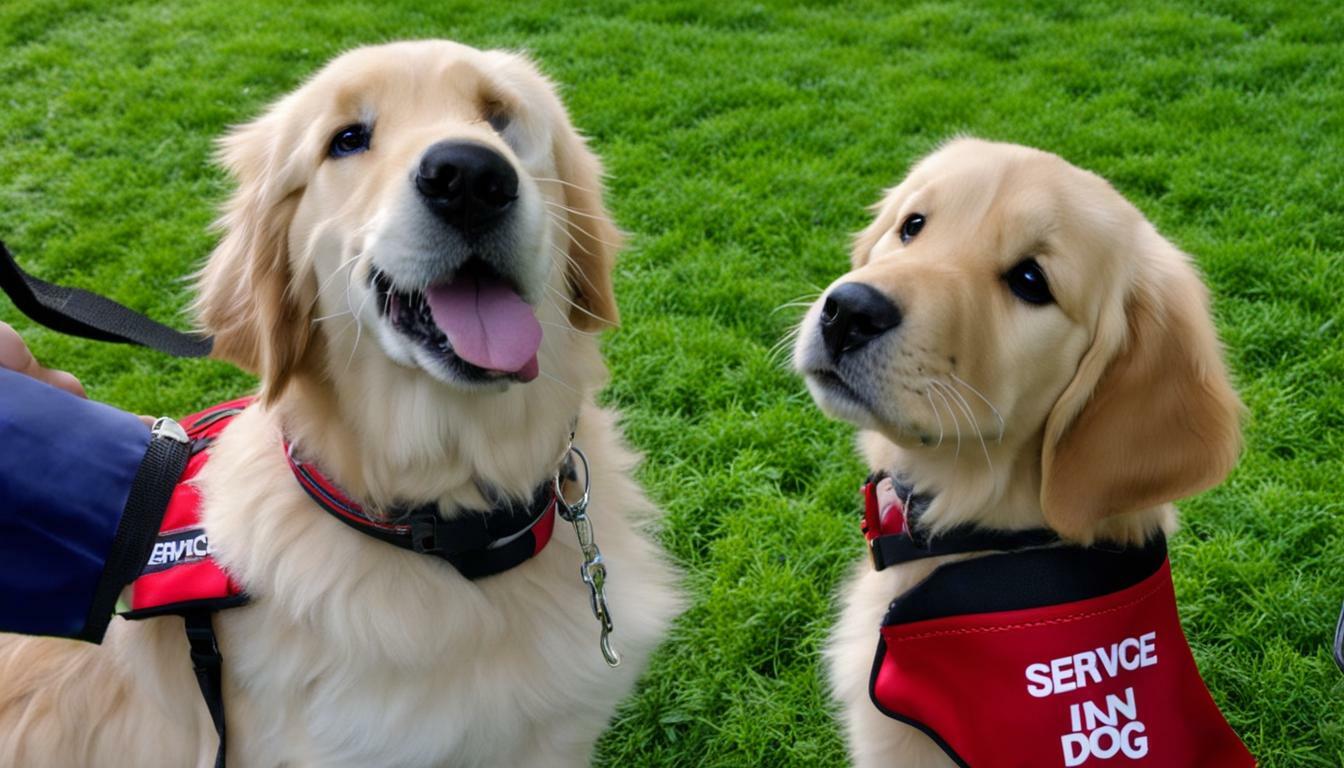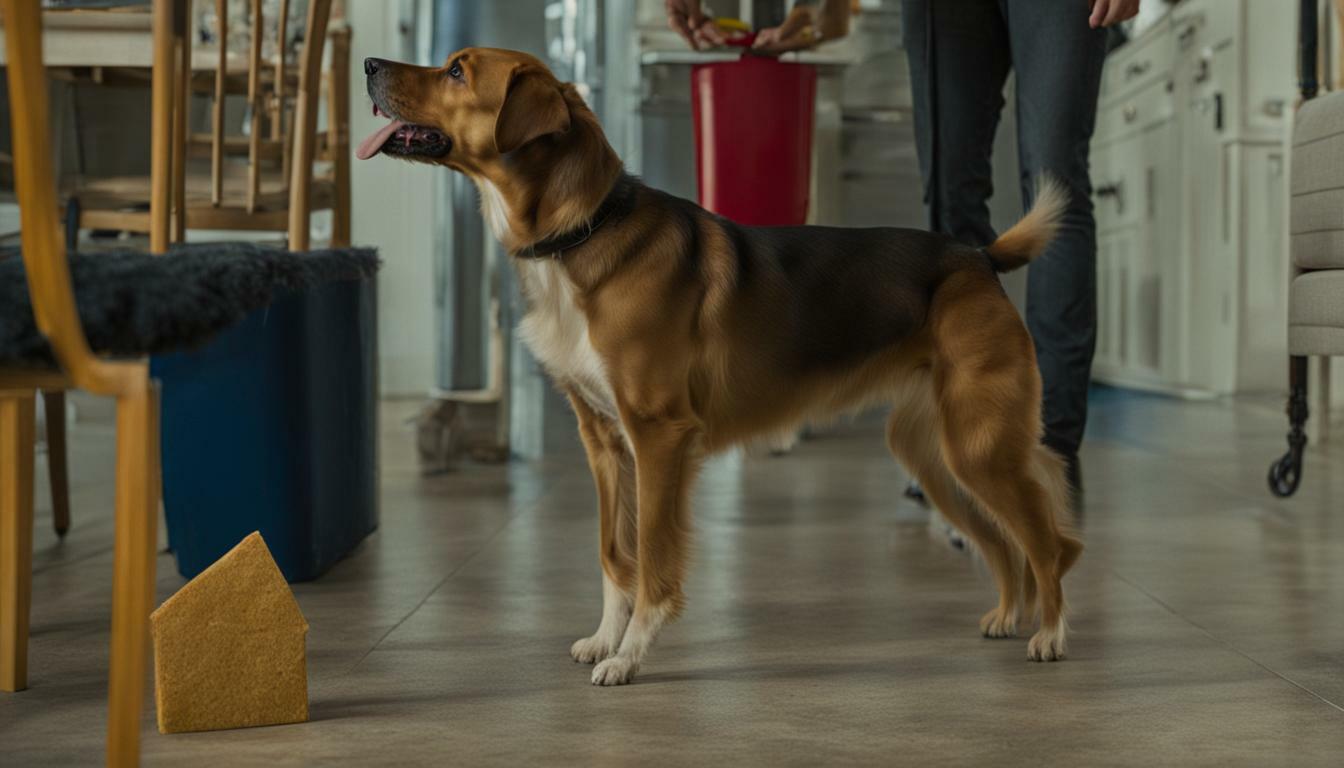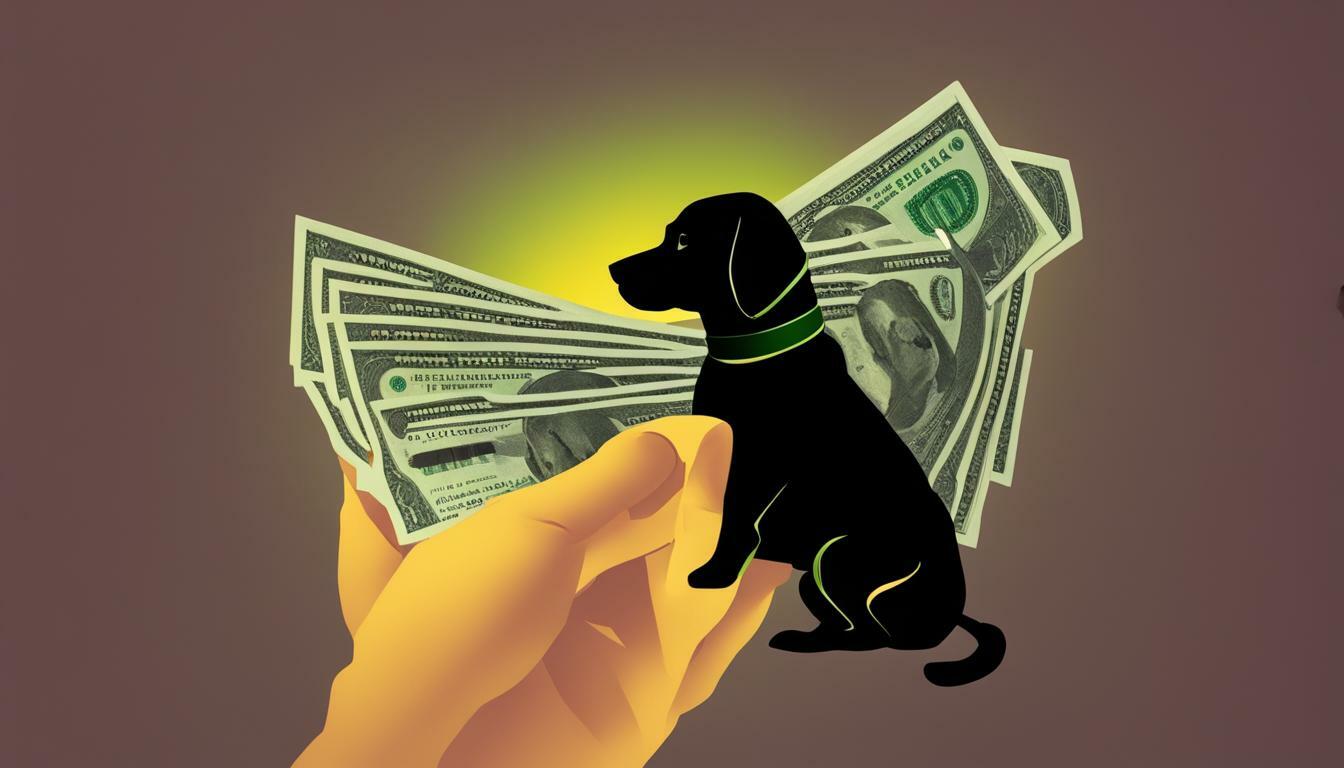Training a Chow Chow dog requires specialized care due to their unique personality traits, thick double coats, and short snouts. Chow Chows are distinctive in their physical appearance, with blue-black tongues, stilted gaits, and fluffy double coats. They originated in China thousands of years ago and were used as guard dogs, companions, and work dogs. Chow Chows are known for their aloof, independent, and cat-like personalities. While they can be mischievous, they are fiercely loyal to their families. Despite their reputation, Chow Chows are not inherently aggressive but rather discerning. They require extensive training and socialization from a young age to ensure they get along with others. Caring for a Chow Chow also involves daily grooming and attention. Training a Chow Chow requires establishing boundaries, leading with confidence, and using positive reinforcement. Daily training sessions should start early, focusing on socialization, grooming, potty training, and basic commands. Grooming a Chow Chow is time-consuming, requiring daily brushing to prevent matting. Chow Chow 101: Owner’s Guide provides an all-in-one digital resource for training and understanding Chow Chows, covering various topics such as finding reputable breeders, house-training, nutrition, and troubleshooting behavioral problems.
Key Takeaways:
- Chow Chows have unique personality traits and physical characteristics that require specialized care.
- Proper training and socialization from a young age are crucial for a well-behaved Chow Chow.
- Daily grooming, including brushing their thick double coats, is essential for maintaining a Chow Chow’s health and appearance.
- The use of positive reinforcement and establishing boundaries are effective training techniques for Chow Chows.
- Chow Chow 101: Owner’s Guide is a comprehensive resource for all aspects of Chow Chow ownership and training.
Understanding the Chow Chow Breed: A Brief Overview
Chow Chows are distinctive in their physical appearance, with blue-black tongues, stilted gaits, and fluffy double coats. Originating from China thousands of years ago, they were primarily used as guard dogs, companions, and work dogs. Despite their aloof and independent nature, Chow Chows are known for their fierce loyalty to their families.
Contrary to popular belief, Chow Chows are not inherently aggressive. Instead, they possess a discerning nature that requires extensive training and socialization from a young age. This is crucial to ensure they get along well with others and adapt to various environments. Training a Chow Chow involves establishing boundaries, leading with confidence, and utilizing positive reinforcement.
To maximize the success of training sessions, it is important to start early and focus on key areas such as socialization, grooming, potty training, and basic commands. Daily training sessions provide a routine for success and contribute to a Chow Chow’s overall development. Additionally, grooming a Chow Chow is an essential part of their care, as their thick double coats require daily brushing to prevent matting.
| Key Points: |
|---|
| Chow Chows have unique physical characteristics, such as blue-black tongues and fluffy double coats. |
| They originated in China and were used for various purposes, including guarding and companionship. |
| Chow Chows are not inherently aggressive but rather possess a discerning nature. |
| Training a Chow Chow requires establishing boundaries and using positive reinforcement. |
| Daily training sessions focusing on socialization, grooming, and basic commands are important. |
| Grooming a Chow Chow’s double coat requires daily brushing to prevent matting. |
| Chow Chow 101: Owner’s Guide is a comprehensive resource for training and understanding Chow Chows. |
| Training a Chow Chow to come when called is crucial for their independence and safety. |
| Short and engaging training sessions, with a focus on repetition and consistency, yield better results. |
The Importance of Early Socialization
Socialization is crucial for a Chow Chow’s development and their ability to interact with other animals and people. Due to their independent nature, Chow Chows may naturally be cautious or reserved when encountering new situations or individuals. Early socialization helps them build confidence, learn appropriate behaviors, and develop positive relationships.
Introducing your Chow Chow to various environments, people, and animals from a young age is essential. Start with controlled and positive experiences, gradually exposing them to different sights, sounds, and smells. Enroll them in puppy socialization classes where they can interact with other dogs and learn proper social skills in a safe and supervised environment.
During socialization, it’s important to remain calm and patient. Allow your Chow Chow to approach new situations at their own pace, offering praise and rewards for calm and friendly behavior. Use treats, toys, and positive reinforcement to create positive associations with new experiences, encouraging your Chow Chow to be more accepting and adaptable throughout their lives.
| Socialization Tips for Chow Chows |
|---|
| Expose your Chow Chow to different sounds, such as vacuum cleaners, doorbells, and sirens. |
| Introduce your Chow Chow to a variety of people, including children, the elderly, and individuals wearing hats or uniforms. |
| Gradually introduce your Chow Chow to other animals, ensuring they are properly vaccinated and well-behaved. |
Socializing an Adult Chow Chow
If you have adopted an adult Chow Chow with limited socialization, it’s never too late to start the process. Approach their socialization with patience and care, taking small steps to gradually expose them to new environments and individuals. Seek guidance from a professional dog trainer or behaviorist to address any specific concerns or challenges you may encounter.
Remember, socialization is an ongoing process that requires consistent effort throughout your Chow Chow’s life. By providing ample opportunities for socialization, you can help your furry friend become a well-rounded and confident member of your family and community.
Establishing Boundaries and Leadership
Chow Chows thrive when they have a clear understanding of their boundaries and a confident leader to follow. Due to their independent nature, it is essential for owners of Chow Chows to establish themselves as the pack leader right from the start. By setting consistent rules and boundaries, you can create a structured environment that allows your Chow Chow to feel secure and know what is expected of them.
One effective way to establish boundaries is through obedience training. Start with basic commands like sit, stay, and come, gradually progressing to more advanced commands as your Chow Chow becomes more responsive. Consistency is key in training a Chow Chow, as they can be strong-willed and stubborn at times. Use positive reinforcement techniques, such as treats and praise, to reward good behavior and motivate your Chow Chow to obey commands.
In addition to obedience training, it is important to provide mental stimulation for Chow Chows. These intelligent dogs need activities that challenge their minds and keep them engaged. Puzzle toys, interactive games, and scent work can help prevent boredom and destructive behavior. By providing leadership, setting boundaries, and offering mental stimulation, you can ensure that your Chow Chow becomes a well-behaved and happy member of your family.
Positive Reinforcement: The Key to Chow Chow Training
Positive reinforcement is the most effective and humane method for training a Chow Chow. These independent and discerning dogs respond best to rewards-based training, where good behavior is encouraged and reinforced. By using positive reinforcement techniques, you can build a strong bond with your Chow Chow and achieve desired behaviors without resorting to punishment or aggression.
When training a Chow Chow, it’s essential to use high-value rewards that motivate and engage them. This could include tasty treats, verbal praise, or playtime with their favorite toy. By rewarding your Chow Chow for desired behaviors, such as sitting, walking on a loose leash, or coming when called, you encourage them to repeat those actions in the future.
Consistency is key when using positive reinforcement. Set clear expectations for your Chow Chow and reward them immediately when they display the desired behavior. Keep training sessions short and engaging to maintain their focus and enthusiasm. Over time, your Chow Chow will associate good behavior with positive outcomes, making training a rewarding and enjoyable experience for both of you.
| Benefits of Positive Reinforcement Training | Tips for Successful Positive Reinforcement Training |
|---|---|
|
|
By utilizing positive reinforcement techniques in your Chow Chow’s training, you can create a strong foundation of trust, cooperation, and good behavior. Remember to be patient, consistent, and always celebrate your Chow Chow’s achievements. With time and dedication, your Chow Chow will become a well-behaved and happy companion.
Daily Training Sessions: A Routine for Success
Consistent and structured daily training sessions are essential for a well-behaved Chow Chow. Training a Chow Chow requires patience, dedication, and a focus on positive reinforcement. By setting aside time each day for training, you can establish a routine that promotes learning and development.
Start your daily training sessions with a focus on socialization. Introduce your Chow Chow to different environments, people, and other animals. This will help them become comfortable and well-adjusted in various situations. Use treats and praise to reward positive behavior and reinforce their confidence.
In addition to socialization, grooming should also be incorporated into your daily training routine. Chow Chows have thick double coats that require regular brushing to prevent matting. Take this opportunity to bond with your Chow Chow and teach them to sit still while being groomed. Reward them with treats and praise for their cooperation.
Basic commands such as sit, stay, and come should also be practiced daily. Use treats and positive reinforcement to reward your Chow Chow for following your commands. Keep training sessions short and engaging, focusing on repetition to reinforce learning. Consistency is key in teaching your Chow Chow to respond to these commands reliably.
| Benefits of Daily Training Sessions |
|---|
| 1. Strengthen the bond between you and your Chow Chow. |
| 2. Promote socialization and confidence in different environments. |
| 3. Establish rules and boundaries for your Chow Chow’s behavior. |
| 4. Develop essential obedience skills for a well-behaved Chow Chow. |
By incorporating socialization, grooming, and basic commands into your daily training sessions, you can ensure that your Chow Chow receives the necessary mental and physical stimulation they need to thrive. Remember to keep the sessions positive, reward-based, and consistent to achieve the best results. Your Chow Chow will thank you with their love, loyalty, and good behavior!
The Importance of Grooming for Chow Chows
Grooming is an essential part of caring for a Chow Chow and maintaining their health and appearance. With their thick double coats, Chow Chows require regular brushing to prevent matting and keep their fur in prime condition. Daily grooming sessions are recommended to ensure that their coat stays clean and free of tangles.
In addition to brushing, regular bathing is necessary to keep a Chow Chow’s coat and skin healthy. It is important to use a dog-specific shampoo and conditioner that is gentle on their sensitive skin. Chow Chows also have a unique trait of having blue-black tongues, which should be regularly checked for any signs of discoloration or abnormalities.
| Grooming Tips for Chow Chows | |
|---|---|
| 1. | Start grooming sessions early to get your Chow Chow accustomed to the process from a young age. |
| 2. | Use a slicker brush or a wide-toothed comb to gently remove any tangles or mats. |
| 3. | Trim their nails regularly to prevent overgrowth and discomfort. |
| 4. | Check their ears for any signs of infection or excessive wax buildup, and clean them using a dog ear cleaner. |
| 5. | Regularly brush their teeth using a dog-specific toothbrush and toothpaste to maintain good oral hygiene. |
Grooming a Chow Chow goes beyond just the physical aspects; it is also an opportunity to bond with your dog. Make sure to approach grooming sessions with patience and a calm demeanor, rewarding your Chow Chow with treats and praise for their cooperation. By maintaining a regular grooming routine, you can help your Chow Chow look their best and keep them comfortable and healthy.
All-in-One Resource: Chow Chow 101 Owner’s Guide
Chow Chow 101: Owner’s Guide is an invaluable resource for all Chow Chow owners, providing expert advice and guidance on training, care, and troubleshooting. If you’re a proud owner of a Chow Chow or considering bringing one into your family, this comprehensive digital guide has got you covered.
With Chow Chow 101, you’ll gain access to a wealth of knowledge about these unique and fascinating dogs. From finding reputable breeders to house-training techniques, nutrition tips to troubleshooting behavioral problems, this guide covers it all. Whether you’re a first-time owner or a seasoned Chow Chow enthusiast, you’ll find helpful information tailored to your specific needs.
One of the key features of Chow Chow 101 is its emphasis on training. This resource offers step-by-step instructions, tips, and strategies for effectively training your Chow Chow. Learn how to establish boundaries, be a confident leader, and use positive reinforcement techniques for successful training sessions. The guide also provides guidance on teaching commands, addressing behavioral issues, and ensuring the safety and well-being of your furry companion.
| Chow Chow 101: Owner’s Guide Highlights |
|---|
| Accurate and up-to-date information on Chow Chow breed characteristics |
| Expert advice on training techniques, including socialization, obedience, and recall training |
| Insights into grooming requirements and tips to keep your Chow Chow’s double coat healthy |
| Troubleshooting tips for common behavioral problems, such as aggression and separation anxiety |
| Recommendations for proper nutrition and feeding guidelines specific to Chow Chows |
Chow Chow 101: Owner’s Guide will be your go-to resource throughout your Chow Chow’s life. With its comprehensive and user-friendly format, you’ll have the tools and knowledge to provide the best care and training for your furry friend. Start your journey to becoming a confident and knowledgeable Chow Chow owner today!
Training a Chow Chow to Come When Called
Teaching a Chow Chow to come when called is a crucial skill that requires dedication, patience, and high-value rewards. Due to their independent nature, Chow Chows may be less inclined to respond to recall commands compared to other breeds. However, with consistent training and positive reinforcement, you can successfully teach your Chow Chow to come when called and ensure their safety and freedom.
Start by using a high-value reward that motivates your Chow Chow, such as small pieces of cooked chicken or their favorite treats. Use a clear and distinctive recall command, such as their name followed by “come” or “here”. Begin training in a quiet and controlled environment, gradually increasing the level of distractions over time.
When your Chow Chow responds to the recall command, reward them immediately with praise and the high-value reward. Make the experience positive and enjoyable so they associate coming to you with positive outcomes. Avoid scolding or punishing your Chow Chow if they do not respond as this can create negative associations and hinder their progress.
Consistency is key in training a Chow Chow to come when called. Practice the recall command in various locations and situations, gradually increasing the difficulty. Always use the same command and rewards, and ensure that everyone in the household follows the same training techniques. With time and patience, your Chow Chow will learn to associate the recall command with positive experiences and willingly come to you when called.
| Training Tips for Teaching a Chow Chow to Come When Called |
|---|
| Use a high-value reward that motivates your Chow Chow |
| Start training in a quiet and controlled environment, gradually increasing distractions |
| Use a clear and distinctive recall command |
| Reward your Chow Chow immediately when they respond to the recall command |
| Avoid scolding or punishing your Chow Chow if they do not respond |
| Be consistent in your training techniques and practice in various locations |
Short and Engaging Training Sessions: The Key to Chow Chow Learning
Training sessions should be kept short and engaging to keep a Chow Chow’s attention and maximize their learning potential. Being independent by nature, Chow Chows may become easily bored or lose focus during lengthy training sessions. To overcome this, it is recommended to break down training into short sessions of around 10 to 15 minutes, several times a day.
During each session, it is essential to keep the Chow Chow engaged and motivated. Utilizing positive reinforcement methods, such as treats, praise, and play, can be highly effective in capturing their attention and encouraging desired behaviors. Chow Chows respond very well to rewards, so be sure to use high-value treats that they find particularly enticing.
Repetition is key when training a Chow Chow. By incorporating repetitive exercises into each session, you can reinforce specific commands and behaviors. Consistency is also vital, as Chow Chows thrive in environments with clear boundaries and consistent expectations. By consistently reinforcing training methods and commands, you can help your Chow Chow learn and retain the desired behaviors more effectively.
| Short and Engaging Training Sessions: Tips and Takeaways |
|---|
| Keep training sessions short, around 10 to 15 minutes, to maintain the Chow Chow’s focus and prevent boredom. |
| Use positive reinforcement, such as treats, praise, and play, to motivate and engage your Chow Chow during training. |
| Incorporate repetitive exercises to reinforce commands and behaviors, helping your Chow Chow learn and retain information. |
| Stay consistent in your training methods and expectations to provide a structured environment for your Chow Chow. |
Tips for Keeping Training Engaging and Effective
- Vary the training exercises to keep your Chow Chow mentally stimulated and prevent boredom.
- Keep the training environment free of distractions to maintain your Chow Chow’s focus.
- Gradually increase the difficulty level of the exercises as your Chow Chow progresses in their training.
- End each session on a positive note, rewarding your Chow Chow for their efforts and accomplishments.
Troubleshooting Behavioral Problems in Chow Chows
Despite their loyal nature, Chow Chows may occasionally exhibit behavioral problems that require proper understanding and training techniques. These distinctive dogs are known for being independent and having a discerning nature, which can sometimes lead to challenges in their behavior. However, with the right approach, these issues can be addressed effectively.
One common behavioral problem in Chow Chows is aggression, which can manifest towards people or other animals. It’s important to recognize the underlying causes of aggression, such as fear, territoriality, or a lack of socialization. Professional guidance from a qualified dog trainer or behaviorist can be invaluable in resolving aggression issues, as they can help identify triggers and develop appropriate training strategies.
Separation anxiety is another challenge that Chow Chow owners may face. These dogs can form strong bonds with their owners and become anxious when left alone. To alleviate separation anxiety, gradual desensitization techniques can be employed. This involves gradually increasing the duration of time the dog is left alone and providing them with positive reinforcement when they remain calm. Utilizing puzzle toys or interactive feeders can also help keep them engaged and distracted in the owner’s absence.
| Common Behavioral Problems in Chow Chows | Training Techniques |
|---|---|
| Aggression towards people or animals | Seek professional guidance, identify triggers, and develop appropriate training strategies. |
| Separation anxiety | Gradual desensitization, positive reinforcement, and engaging toys or feeders. |
| Stubbornness or willfulness | Consistent and patient training, positive reinforcement, and clear boundaries. |
| Excessive barking | Identify triggers, teach a “quiet” command, and redirect their attention to other activities. |
Chow Chows can also be known for their stubbornness and willfulness. This can make training sessions challenging at times. However, a firm but positive training approach, with consistent reinforcement and clear boundaries, can help address this behavior. Reward-based training methods, using high-value treats and praise, can motivate Chow Chows to comply with commands and exhibit desired behaviors.
Excessive barking is another issue that may arise with Chow Chows. Identifying the triggers for their barking and redirecting their attention to more appropriate activities can help address this behavior. Teaching a “quiet” command and rewarding them when they remain calm can also be effective in reducing excessive barking.
By understanding the specific needs and characteristics of Chow Chows and employing appropriate training techniques, many behavioral problems can be mitigated or resolved. Patience, consistency, and positive reinforcement are key to helping Chow Chows become well-behaved and happy companions.
Conclusion: A Well-Trained Chow Chow for a Lifetime of Happiness
Training a Chow Chow is a rewarding endeavor that will result in a well-behaved and happy companion for life. These unique dogs require specialized care due to their distinctive physical appearance, including blue-black tongues, stilted gaits, and fluffy double coats.
Originating from China, Chow Chows have served as guard dogs, companions, and work dogs for thousands of years. Their aloof, independent, and cat-like personalities require extensive training and socialization from a young age to ensure they get along with others. Despite their reputation, Chow Chows are not inherently aggressive, but rather discerning in their interactions.
Caring for a Chow Chow also involves daily grooming and attention. Their thick double coats require regular brushing to prevent matting, making grooming a time-consuming but necessary part of their care routine.
To train a Chow Chow effectively, it is important to establish boundaries, lead with confidence, and use positive reinforcement. Regular training sessions should begin early, focusing on socialization, grooming, potty training, and basic commands. This ensures that Chow Chows develop into well-mannered and obedient companions.
Fortunately, there is a comprehensive digital resource available to guide Chow Chow owners through the training process. Chow Chow 101: Owner’s Guide covers various topics, including finding reputable breeders, house-training, nutrition, and troubleshooting behavioral problems. This all-in-one resource is an invaluable tool for understanding and training Chow Chows.
Training a Chow Chow to come when called is a crucial command for their independence and safety. It requires dedication, patience, and the use of high-value rewards. Remember, training sessions should be kept short and engaging, focusing on repetition and consistency to reinforce positive behavior.
By investing time and effort into training, grooming, and socialization, owners can ensure their Chow Chow becomes a well-behaved and happy companion for life. The bond formed through training will create a lifetime of happiness and fulfillment for both the owner and the Chow Chow.
FAQ
Q: Why do Chow Chows require specialized care?
A: Chow Chows have unique personality traits, thick double coats, and short snouts that require specialized care and attention.
Q: Do Chow Chows have aggressive tendencies?
A: No, Chow Chows are not inherently aggressive. They are discerning and require extensive training and socialization to ensure they get along with others.
Q: How should I train my Chow Chow?
A: Training a Chow Chow involves establishing boundaries, leading with confidence, and using positive reinforcement. Daily training sessions should focus on socialization, grooming, potty training, and basic commands.
Q: How often should I groom my Chow Chow?
A: Chow Chows require daily grooming, including brushing their thick double coats, to prevent matting.
Q: Are there resources available to help me with Chow Chow training?
A: Yes, Chow Chow 101: Owner’s Guide is an all-in-one digital resource that provides comprehensive information on training and understanding Chow Chows, including finding reputable breeders, house-training, nutrition, and troubleshooting behavioral problems.
Q: How do I train a Chow Chow to come when called?
A: Training a Chow Chow to come when called requires dedication, patience, and high-value rewards. Step-by-step instructions and consistent training sessions are key.
Q: How long should training sessions be for a Chow Chow?
A: Training sessions for Chow Chows should be kept short and engaging to maintain focus. Repetition and consistency are important for successful training.
Q: What should I do if my Chow Chow exhibits behavioral problems?
A: If your Chow Chow exhibits behavioral problems, such as aggression or separation anxiety, it is important to seek advice and solutions from professionals. Understanding the underlying causes and addressing them with proper training techniques is crucial.
Q: Why is early socialization important for Chow Chows?
A: Early socialization is important for Chow Chows to ensure they get along with others. Proper socialization helps prevent behavioral issues and promotes a well-rounded and well-adjusted dog.
Q: Why is positive reinforcement the key to Chow Chow training?
A: Positive reinforcement, using treats, praise, and play as motivators, is the most effective training method for Chow Chows. It builds a strong bond between the dog and the owner and encourages positive behaviors.
Q: What are the physical characteristics of a Chow Chow?
A: Chow Chows have blue-black tongues, stilted gaits, and fluffy double coats. They are distinctive in their physical appearance.
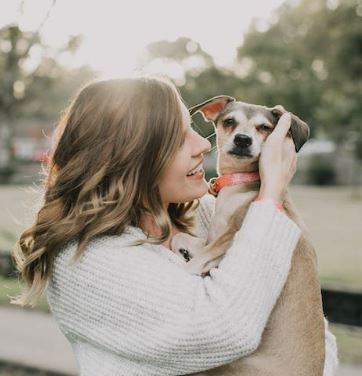
Marissa Delotta, 36, from Dayton, Ohio, is the creative force behind Roverboard.com, a beloved online destination for dog lovers. As a dedicated mom and canine enthusiast, Marissa combines her family experiences with her love for dogs to offer a platform where dog owners can exchange tips, heartwarming stories, and advice. Her website has become a vibrant community for sharing the joys of dog parenting. In her free time, Marissa enjoys exploring dog parks with her family and volunteering at local animal shelters.

